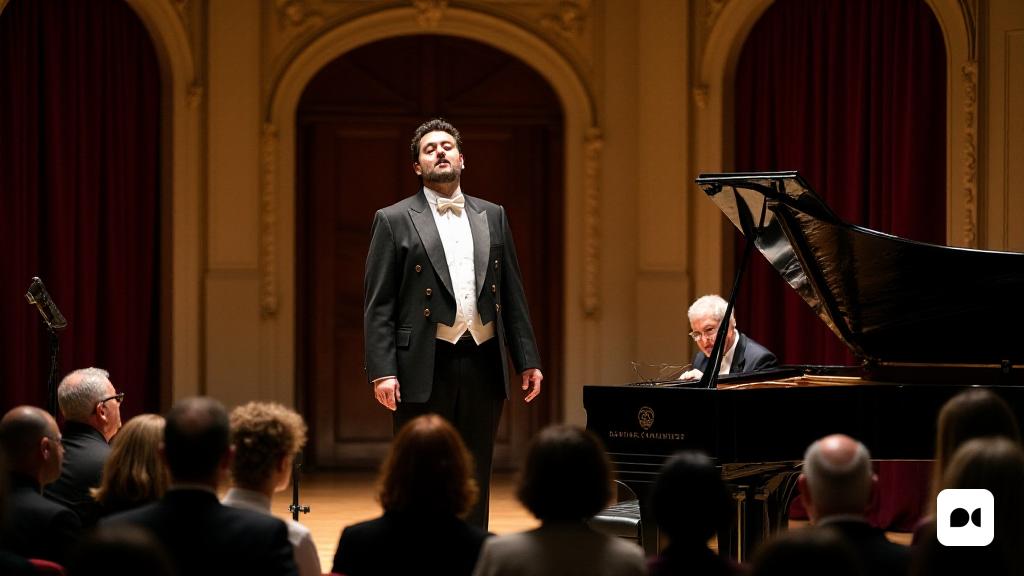A recital that transcends the routine
On Friday, March 28, the Domènech i Montaner Room hosted an unforgettable musical event, with the Austrian bass Günther Groissböck and the British pianist Julius Drake as protagonists. With a repertoire exploring the theme of freedom, the concert was erected as a reflection of contemporary struggles and longings.
Celebrating the serious voices
Lovers of deep voices were especially fortunate, as recitals with low tessitus singers are becoming more and more scarce. In a world where light voices dominate, Groissböck stands out as a rare gem, capable of captivating with its imposing vocal presence.
Groissböck’s trip
With a career that has led him to world -renowned scenarios, Groissböck is one of the most recognized low ones of the moment. However, his absence in the role of Cardinal Brogni in La Juive has left a gap that those attending the concert regretted, as well as his recent performance at Lohengrin, who did not receive the attention he deserved.
The voice power
Groissböck’s voice is powerful, with a timbre that resonates with authority. Although their treble may sometimes be a bit forced, their musical ability and expressiveness make up these small shortcomings, making each interpretation a memorable experience.
A diversified program
The recital began with a selection of Lieder by Schubert, with the poignant Prometheus D. 674, who showed Groissböck’s ability to convey deep emotions. His interpretation of the most intimate lieder, such as Ganymed D. 544, showed his skill in dynamic phrasing and control.
Carl Loewe’s influence
Groissböck then addressed works by Carl Loewe, where he strongly embodied the figure of Saint Francis A der Heilige Franziskus, demonstrating a great command of the phrasing and an emotional depth that captivated the audience.
A final shot with Mahler
The second part of the concert was dedicated to Strauss, with a selection that, although there were some difficulties for the Groissböck’s tessitura, culminated in the exciting Brefreit OP.39/4. The last section, focused on Mahler, left a lasting impression with the powerful reveal.
Julius Drake’s role
Julius Drake’s accompaniment was essential for the success of the concert. His ability to create atmospheres through the piano added a new dimension to the interpretations of Groissböck, standing out in times of great technical complexity.
The Futur de la Música Lieder
Prior to the main concert, the soprano Maria Isart had the opportunity to present himself with the pianist Quimey Urquiaaga, performing works by Mozart and other composers. His promising voice glimpsed a bright future in the Lied world.

